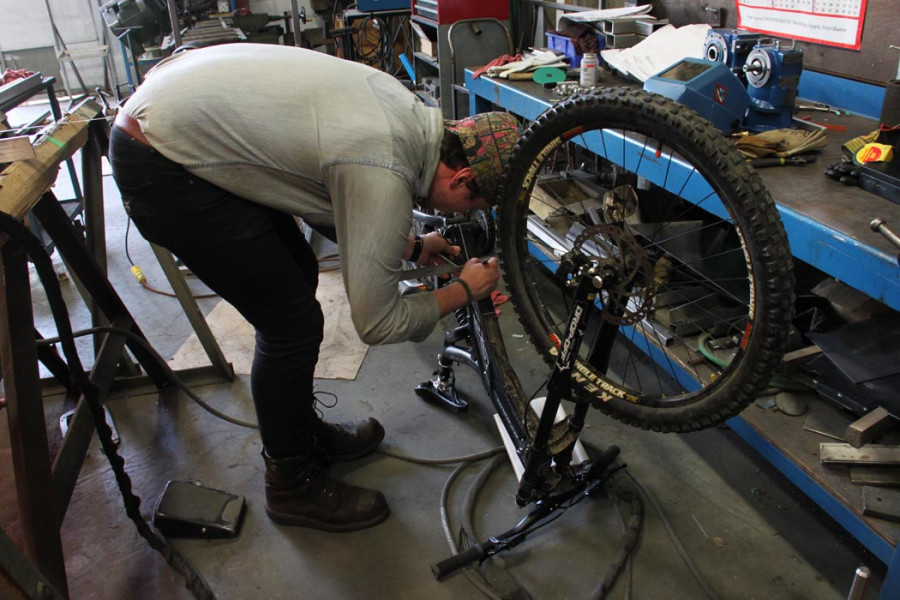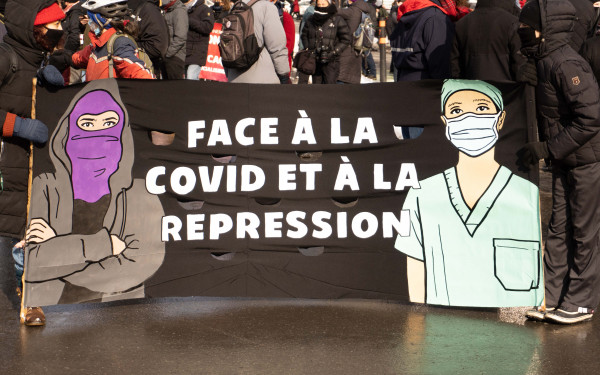Spoke, Line & Sinker
To Catch a Bike Thief Seeks Stolen Rides—and Answers
Just like choosing between fixed-gear and 10-speed, or between vintage and new, how you lock your bike—U-lock or chain, key or combination—is just as important.
By now most people know that locking just the wheel is asking for trouble—but not locking through the spokes could mean coming back to a wheel-less bike.
Stolen bike statistics are alarming to say the least. According to the team behind To Catch a Bike Thief, a new web series slated to air this fall, every 2.5 minutes a bicycle is stolen, and only one in 100 is ever recovered.
Armed with a DIY bait-bike equipped with vibration sensors, a tracker and a GPS system that broadcasts its real-time location every 10 seconds, Ingo Lou, the producer and host of new web show To Catch a Bike Thief, along with a team of dispatchers, confrontation specialists and security officers, started hunting the bike thieves wreaking havoc in our cities.
“I know I’m certainly not the only one to be affected by bike theft,” Lou said. “Pretty much everybody that I know that rides a bike at one point in their life has had their bike stolen.
“There’s a really strong perception that nothing is being done about it, or that nothing can be done, which is really the reason why we decided to make To Catch a Bike Thief—to show that there are actual tools and technologies [that bikers] can use to protect themselves.”
Based out of Vancouver, To Catch a Bike Thief’s team is looking to change the dialogue surrounding theft.
“We would actually like to see an increase in reported bike thefts, and the reason for that is right now because of the perception that nothing can be done, no one really reports their bikes as being stolen when they go missing,” he said.
“As a result, the idea is that if we can encourage everyone to report their bikes as being stolen as soon as they go missing, there can be an increase in perceived incidents of bike thefts. Therefore, the stats could show a sudden spike and then maybe more attention will be shed on the issue.”
“Our intention is to not involve the cops or law enforcement. [The show is] part education and part entertainment.” – Ingo Lou
Looking to the public for funding, the team hopes to raise $20,000 to shoot and produce Season One. But raising more than that is the goal, and would give them the chance to pursue new initiatives, like travelling to Montreal and San Francisco with the project—something that is already in the works.
“If we find ourselves in an over-funding situation we can start to do some really fun things like shooting episodes in different cities and potentially create a fleet of bait bikes and have them all stolen simultaneously to find out if there’s any type of organized crime element to the bike-theft situation,” said Lou.
“The reason behind that, of course, is if we see that the bikes are coalescing in one area of town, a bike shop or a warehouse, we can blow the doors wide open off of that.” When the bait bike is in place and the lock is cut, a GPS signal is sent out and the team gets to work.
Although watching a thief getting arrested might be sweet revenge for those who have gotten their bike stolen, that’s not the next step in the operation. Instead, the team attempts to interview the thief, looking for answers, such as what bikes they usually target, what kind of locks they look for and the kind of places they steal from.
“Our intention is to not involve the cops or law enforcement. [The show is] part education and part entertainment. It’s all shot from a documentary-style narrative, so what we really are searching for is answers,” said Lou.
“The point of the show is to find out who is stealing bikes, why, where they’re going, who’s buying stolen bikes and trying to get answers, as opposed to trying to get convictions.”


_600_832_s.png)


mp3_600_375_s_c1.png)

